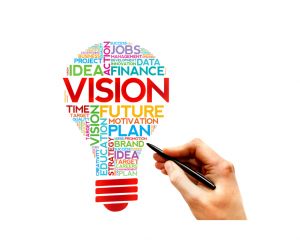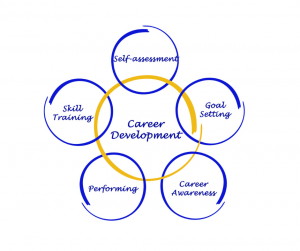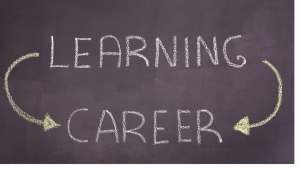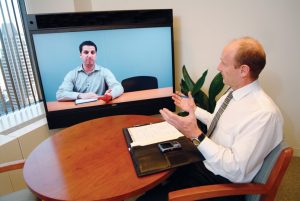Remember the term “new normal”? That seems like ages ago, and now we find ourselves faced with another pivot and a new catchphrase with “returning to normal.” Our work lives are about to change again with a shift back to the way things were—or are they? How is this all playing out in your organization? My conversations with various CEOs and managers have given me great insight on this topic.
When we finally settled into a work from home routine, we discovered there were certain benefits. Do we really want to go back to the way it was? There’s a mixed bag of answers, but what is clear is a new way of thinking about what our working atmosphere looks like.
For those enjoying the work from home option, the good news is my research has told me some organizations are adapting to a hybrid schedule – home 3 days, in the office 2 days or something of that nature. This appeals to many as it gives us the uninterrupted space of a home office and enough face to face time with our colleagues. Navigating all this can prove to be a challenge for the organization, but it’s also an opportunity for a major win in terms of productivity, happy employees, and even offering a creative solution to new employees.
Managers have communicated to me they can easily identify productivity—or lack thereof—in various work from home arrangements after watching this model in action for over a year. Employees have reported improved productivity from their home office, and are taking this positivity and asking for more flexibility. Savvy organizations will capitalize on this if it’s feasible; in the cases where it’s not, the challenge is to get employees back in the routines that were disrupted over a year ago. The art of crafting this balancing act is not lost on CEOs and managers that I’ve spoken to.
LinkedIn is referring to this as #thebigshift and even inviting its members to write posts on the matter. There is much to be learned here. Here’s some things we may want to consider as we all undergo #thebigshift.
Meetings: We all have many, but now is the time to discern which ones can continue to be handled by Zoom, Teams, etc., and which ones really need that face-to-face interaction. Choosing carefully, we can maximize the positive energy of those high level meetings and bring back the sense of working as a team in person where the enthusiasm is contagious and the positive vibes flow. Designing a hybrid meeting schedule can create an atmosphere that works for all.
Routine tasks: Delineating the tedious yet necessary routine tasks are perfect for the home office environment. Depending on what those are and how often they occur, they can be scaffolded into the base of continuing to work from home.
Staff events and meetings: Whether they occur weekly or monthly, the gathering of our colleagues is an opportunity to capitalize on teamwork. Can you mix it up a bit? For example, if they are weekly, can they be rotated that every other is in the office? This psychologically drives accountability, knowing the expectation is to meet twice a month in person, looking their best and showing up with responsibilities met. If once a week gives the inspiration an organization is looking for, go for that. Managers know how to best engage with their employees.
Reviews: Absolutely something you’d want to do in person. It’s that time of the year where performance is reviewed and both employee and manager should look at things objectively, including their work surroundings. Really listen to how employees feel about working in the office versus at home versus a hybrid situation. There is valuable insight to be gleaned from these conversations.
Onboarding: As your organization brings on new members, they may be looking for flexible career solutions. Using our experience in navigating work from home circumstances, we may find that a no or low cost benefit to offer new members of the team. Having a clear plan of however much or little flexibility can be offered is a great thing for prospects to know going in. Management can clearly lay out expectations which may be very attractive to an employee. Recruiters can advertise flexibility as an added benefit.
Finally, if you need all employees back in the office full time, consider ways to put a positive spin on this—it’s less isolating and gives an opportunity to engage in person deal with important matters immediately. Perhaps plan a treat for your employees with some breakfast or lunch brought in for their first day back. Enlist your human resources department to offer some training on adjusting their work schedule back to what it once was. Make it exciting, as if they are coming into a brand new job with lots of opportunity ahead of them. Supporting each other emotionally as well as professionally will go far in helping everyone adjust.
Meanwhile, all of these changes may have led managers to realize they need to create and fill some new positions. If that’s the case, I can help you with your recruitment efforts in this new landscape of working.
If you need assistance in navigating these waters, please contact Marshall at marshall@mbrownassociates.com










 The COVID pandemic has changed many things in our world, including the way we work and interview for our next position. Currently, most interviews are held virtually. In order to make interviewing in this climate a success, we’re sharing some tips to help you make the best presentation.
The COVID pandemic has changed many things in our world, including the way we work and interview for our next position. Currently, most interviews are held virtually. In order to make interviewing in this climate a success, we’re sharing some tips to help you make the best presentation.